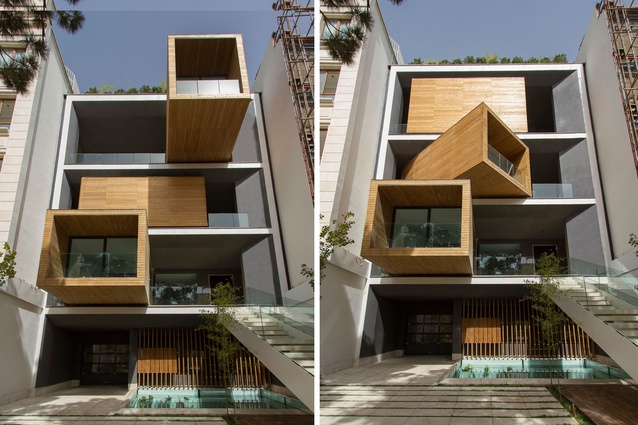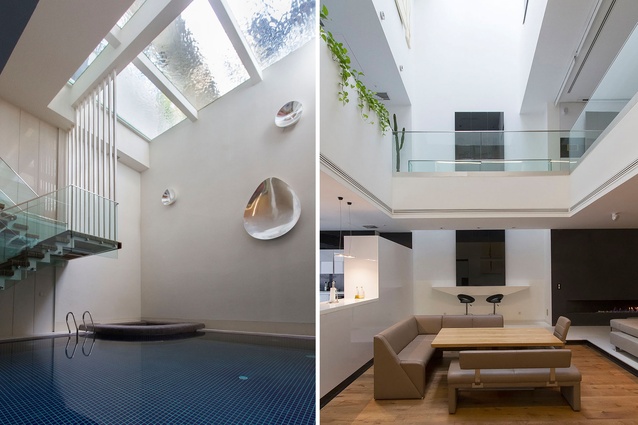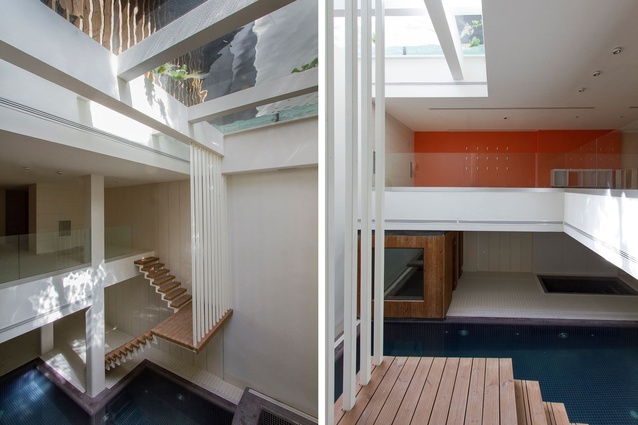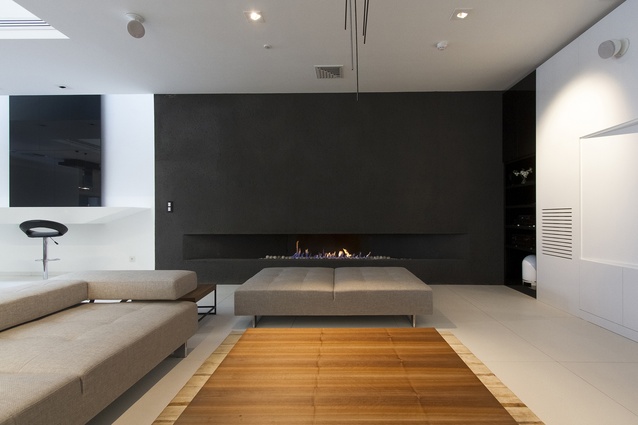Hot House: Tehran House
This is the foldable pocketknife, the swing bridge, the Rubik’s Cube of Iranian residential architecture. On paper, the concept is fairly simple: once Tehran’s bitter winter hits, the box rooms on the upper three levels – an office, guest room and dining area – can be swiveled inwards, providing an extra layer of protection from the cold. When summer is in full swing, the same boxes can be turned out, adding 12m² of terrace space per floor and significant natural light and airflow to the home’s interior.
According to Alireza Taghaboni from Nextoffice, the local architectural firm behind this 1400m² house, local constructions had traditionally solved the issue of extreme temperature swings by having two living rooms: zemestan-neshin, a winter living room usually built at the back of the house, away from the elements; and taabestan-neshin, a front-facing summer living room with better access to natural ventilation. But Taghaboni admits there are other, less weather-based explanations for the open and closed duality of this construction, completed in 2013: “The introverted character [of the building] is related to religious and dogmatic approaches. Its extroverted character is in connection to the parts of the country with more open culture,” Taghaboni says, hinting at the Persian tug-o-war between tradition and modernity.
Conceptual undertones aside, making sure the moving parts and the rest of the house performed well was a perplexing undertaking. “Each [rotating] room was designed for 25 tons,” says Taghaboni of the maximum weight the movable rooms can handle. Although the swivelling mechanism already existed and is used in theatres to change sets during a performance, as well as in the auto-retail industry to display vehicles, “the hardest technical challenge was resolving airlock issues, which must prevent the outside air from penetrating inside of the boxes [while at the same time avoiding] any interference in the rotation.” Balustrades collapse and rise in preparation for the boxes’ three-minute, 220 volt-powered voyage. The apparatus’ engine room – full of German machinery – was commissioned and its construction overseen by the home’s 42-year-old client, an engineer who lives in the house with his wife and two daughters.
Allowing light into the mostly open-plan floorspace when the home is in shutdown mode presented yet another challenge. So a large internal void (capped with dripping fronds of vegetation) was created by Nextoffice and allows sunshine into the top four levels. A series of bridges connect the main part of the house to the area where the boxes reside. For the basement levels, however, a more painterly solution was devised. A shallow, glass-floor fountain on the front yard filters light into the underground areas, dispersing a magnified series of ripples and waves onto all surfaces surrounding the swimming pool, gym, sauna and spa. Mirrored sculptures around those spaces further reflect the water-filtered sunshine. It’s a stunning, Persian gem of kinetic architecture.















